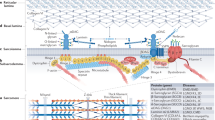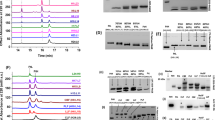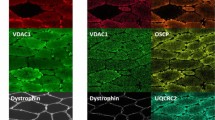Abstract
A MYOGLOBIN which differed from adult myoglobin (MbA) was found in the urine1 of a 28-year-old woman during an episode of idiopathic rhabdomyolysis with myoglobinuria. The same haem protein was later demonstrated in the patient's skeletal muscle2 where it comprised the bulk of the benzidine positive protein after haemoglobin and cytochrome c had been separated from the myoglobin by column chromatography. This distinct chromoprotein was similar in its solubility in ammonium sulphate, spectroscopic characteristics and on cellulose acetate electrophoresis to foetal skeletal myoglobin (MbF) prepared in the same manner from the psoas muscle of infants stillborn at term. It was concluded that myoglobin, like haemoglobin, can present molecular variations which express themselves as disease syndromes, for example, rhabdomyolysis, under certain conditions. Although these clinical and biochemical findings have been supported by one investigator3, other reports do not regard MbF as an entity but rather as an artefact produced by the method used in preparing the myoglobin for analysis. The evidence against MbF has recently been summarized4. The present report examines the spectroscopic characteristics of MbA and MbF, adult and foetal haemoglobin (HbA and HbF, respectively) derived from muscle and blood of the human, dog and pig. The methods were designed to study the various pigments under optimum and standard conditions to minimize the effects of changing pH, salt concentrations, temperature, state of haem oxidation, crystallizations and other manipulations.
This is a preview of subscription content, access via your institution
Access options
Subscribe to this journal
Receive 51 print issues and online access
$199.00 per year
only $3.90 per issue
Buy this article
- Purchase on Springer Link
- Instant access to full article PDF
Prices may be subject to local taxes which are calculated during checkout
Similar content being viewed by others
References
Benoit, F. L., Theil, G. B., and Watten, R. H., Nature, 199, 387 (1963).
Benoit, F. L., Theil, G. B., and Watten, R. H., Ann. Intern. Med., 61, 1133 (1964).
Perkoff, G. T., New Eng. J. Med., 270, 263 (1964).
Kossman, R. J., Fainer, D. C., and Boyer, S. H., in Cold Spr. Harb. Symp. Quant. Biol., 29, 375 (1964).
Awad, E., Cameron, B., and Kotite, L., Nature, 198, 1201 (1963).
Åkeson, A., and Theorell, H., Arch. Biochem. Biophys., 91, 319 (1960).
Perkoff, G. T., Program of American Society for Clinical Investigation (abstr.), 69 (May 3, 1965).
Author information
Authors and Affiliations
Rights and permissions
About this article
Cite this article
THEIL, G., WILLIAMS, J. Characteristics of Adult and Foetal Myoglobin in the Visible Light Spectrums. Nature 213, 75–76 (1967). https://doi.org/10.1038/213075a0
Issue Date:
DOI: https://doi.org/10.1038/213075a0
Comments
By submitting a comment you agree to abide by our Terms and Community Guidelines. If you find something abusive or that does not comply with our terms or guidelines please flag it as inappropriate.



